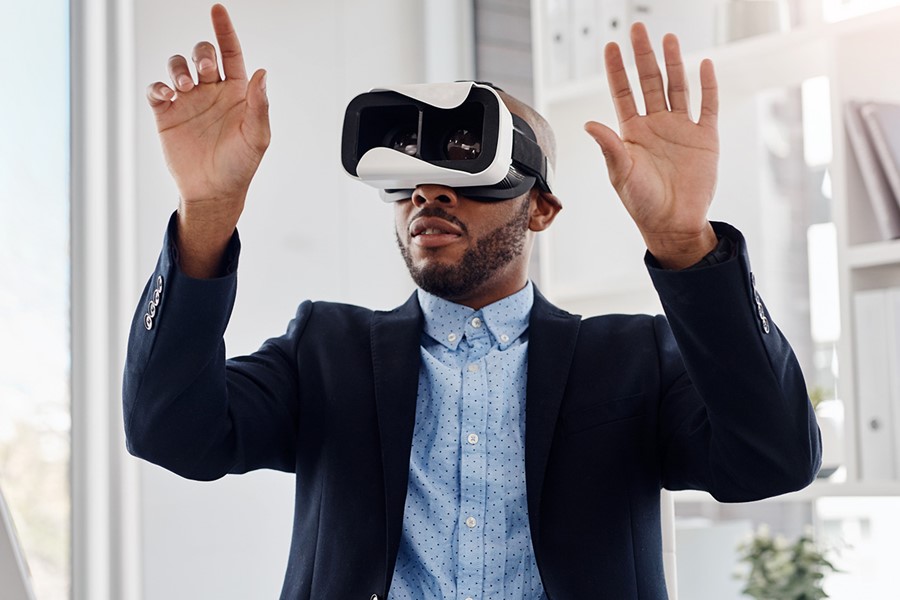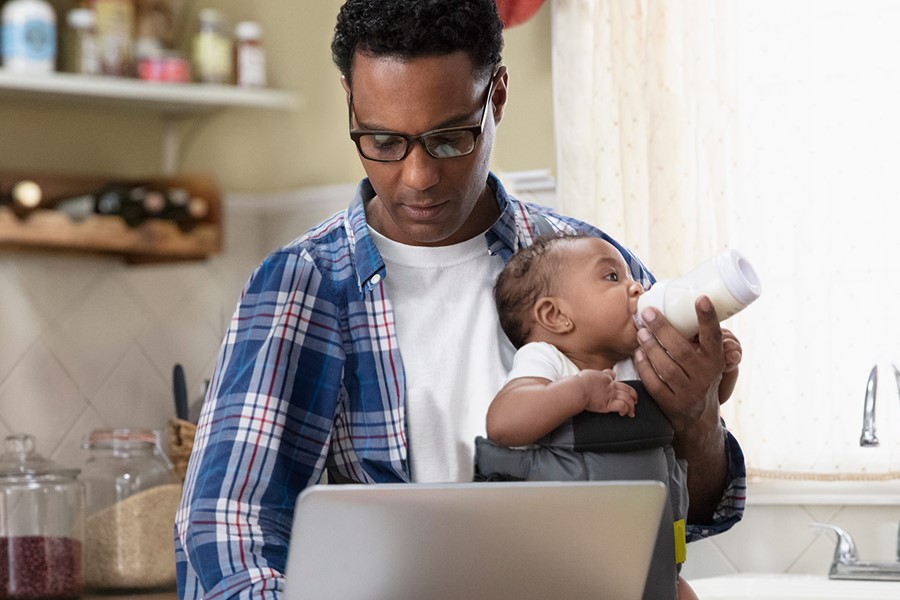

Archived Insight | April 27, 2021
Organizations are rethinking all aspects of the employee experience. Worker expectations are changing and shifting workforce demographics suggest the workforce of the future will be even more diverse than it is today. Meeting the needs of a diverse workforce is driving greater demand for personalization and customization of all things work.
Helping people achieve their personal and work-related goals supports attraction and retention as well as improves productivity. Employees expect organizations to know them and create experiences that match their interests and needs. Data-driven, hyper-personalization can improve engagement and deliver meaningful employee experience.

Share this page
Personalization and customization are integral to the employee journey, touching everything from recruiting, onboarding, and communications to employee benefits, learning and development, and the workplace. There are many places that leading organizations are focused on delivering personalized experiences.
 Many job seekers want to find a job in the same way they consume other services, with a personalized, high-touch approach. With virtual recruiting on the rise, however, job seekers are struggling to assess organizational culture and job fit. Monster’s 2021 Future of Work Survey found 75 percent of candidates agreed that “virtual hiring makes it difficult to really assess how a company’s values and culture align with my own.”
Many job seekers want to find a job in the same way they consume other services, with a personalized, high-touch approach. With virtual recruiting on the rise, however, job seekers are struggling to assess organizational culture and job fit. Monster’s 2021 Future of Work Survey found 75 percent of candidates agreed that “virtual hiring makes it difficult to really assess how a company’s values and culture align with my own.”
Personalizing the candidate journey can bridge this gap. Organizations are using a range of customization strategies. These include tailoring messages to the individual as well as recognizing candidates that visit the organization’s website and inviting them to join a talent network. They are also using outreach emails that focus on candidate interests, preferences, and motivations.
Growing interest in hybrid work models — combining in-person and remote work — allow organizations to look beyond traditional talent pools. This changes the calculation for both organizations and job candidates. While it opens up new opportunities and removes barriers to enhance diversity, it compels organizations to adjust how they source talent.
 Up to 20 percent of staff turnover occurs within the first 45 days of employment. Whether onboarding in person or virtually, it’s essential to personalize the new hire experience and communicate the organization’s culture and expectations.
Up to 20 percent of staff turnover occurs within the first 45 days of employment. Whether onboarding in person or virtually, it’s essential to personalize the new hire experience and communicate the organization’s culture and expectations.
Personalizing the onboarding experience for new hires and creating a sense of belonging can make the difference between setting someone up for success and facing low productivity and high turnover costs. A 2020 survey of newly hired remote workers by Promoleaf found more than one-third (35 percent) of remote workers wanted to be contacted by video at least once a day, and 26 percent preferred contact two to four times per week.
The best onboarding programs focus on people, not paperwork, with multiple touch points before the person starts. A well-designed onboarding program can improve productivity, lead to better retention, and build a stronger employee experience. A 2018 study by UrbanBound found organizations with a standard onboarding process experienced 54 percent greater new hire productivity and 50 percent greater new hire retention.
 An organization’s internal communications can have a strong influence on productivity and engagement. Communication is a critical component of any organization, particularly during times of crisis. COVID-19 demonstrated a need for timely, targeted messaging to keep employees informed and engaged.
An organization’s internal communications can have a strong influence on productivity and engagement. Communication is a critical component of any organization, particularly during times of crisis. COVID-19 demonstrated a need for timely, targeted messaging to keep employees informed and engaged.
The new-hire experience can set the tone for benefits communication. Personalizing communications can empower employees to make better decisions and get the most out of the benefits and programs that meet their needs and experiences. Understanding employees’ diverse needs and tailoring communications to help workers address those needs can lead to improved engagement and job satisfaction.
A 2020 Evive survey on communications found most employees surveyed said they would benefit from highly personalized reminders to take timely action on health, financial, and workplace benefits. MetLife’s 2020 Employee Benefits Trends Study found younger generations are particularly interested in online decision support tools and personalized communications. Decision support tools are fun, educational, and help employees make good choices.
 When it comes to benefits, employees want options. In addition to personalizing benefits education, organizations can personalize the programs themselves. Benefits are most effective when they are personalized and can be adapted to employees’ individual needs. MetLife’s 2019 Employee Benefit Trends Study reports 93 percent of employees say the ability to customize their benefits is a "must-have" or "nice-to-have" option. In addition, 72 percent of employees say having benefits customized to meet their needs would increase their loyalty to the company.
When it comes to benefits, employees want options. In addition to personalizing benefits education, organizations can personalize the programs themselves. Benefits are most effective when they are personalized and can be adapted to employees’ individual needs. MetLife’s 2019 Employee Benefit Trends Study reports 93 percent of employees say the ability to customize their benefits is a "must-have" or "nice-to-have" option. In addition, 72 percent of employees say having benefits customized to meet their needs would increase their loyalty to the company.
Voluntary benefits and non-traditional benefits can be especially attractive. Benefits such as caregiver support, financial wellness solutions, and fertility benefits can meet personal needs and support engagement. During the pandemic, organizations quickly pivoted to ensure benefits met individual needs, such as reimbursing work-from-home expenses, enhancing paid leave, supporting caregivers and expanding mental health supports.
Offering a range of options to address a diversity of needs and individual interests allows employees to choose the benefits that matter most to them. The challenge for organizations is in offering meaningful choices without overwhelming workers. Focus groups and surveys can help organizations better understand what motivates individuals and the types of benefits they want. A personalized platform can further boost benefits utilization and provide critical calls to action with nudges, reminders, and customized experiences.
 New technology that tailors courses to individual interests, behaviors and goals is fueling personalization in learning and development (L&D). With personalization, organizations can proactively recommend training based on an individual’s past learning experiences or future assignments.
New technology that tailors courses to individual interests, behaviors and goals is fueling personalization in learning and development (L&D). With personalization, organizations can proactively recommend training based on an individual’s past learning experiences or future assignments.
Personalized L&D strategies can meet individual skill gaps and lead to improved performance and retention. This includes mobile learning, micro-learning, LMS-based programs and gamification. These strategies can help organizations create learning journeys that match different interests, aspirations, and learning styles.
New and immersive technologies can also support learning, particularly among a distributed or remote workforce. Organizations are using augmented and virtual reality to train workers, deliver information, and accelerate experiential learning (see our insights on the use of immersive technologies).
A 2019 study from Degreed and Harvard Business Publishing found employees who feel their organization offers positive learning opportunities were 21 percent less likely to leave their organization for a new role over the prior three years.
 The physical environment affects everything from productivity and performance to health and wellness. Employees who are satisfied with their workspace — whether in a central office or remote — report higher energy levels and fewer sick days. With cloud technology and remote working policies adopted during the pandemic, expectations about where and when work gets done is changing for both individuals and organizations.
The physical environment affects everything from productivity and performance to health and wellness. Employees who are satisfied with their workspace — whether in a central office or remote — report higher energy levels and fewer sick days. With cloud technology and remote working policies adopted during the pandemic, expectations about where and when work gets done is changing for both individuals and organizations.
Work models are evolving to meet individual needs and will vary based on industry and job requirements. While a fully remote workforce may be better suited to some organizations, a hybrid model that offers flexibility and promotes in-person interactions may accommodate a wider range of organizations. “Hub and spoke” models — combining a central location (hub) with satellite offices or other workspaces (spoke) — can offer workers the opportunity to reduce commuting time and interact with co-workers closer to home.
A September 2020 FlexJobs survey on remote work found 65 percent want to work remotely on a full-time basis after the pandemic. Nearly one-third (31 percent) of the survey’s 4,000 respondents prefer a hybrid work arrangement. Flexibility is key. Some 81 percent of respondents to the survey said they would be more loyal to their employer if they had flexible work options.
 Personalization is everywhere — in social media and marketing — and increasingly at work. Not only do workers expect competitive compensation and benefits, they also want a compelling employee experience. While this change in expectations was underway prior to the pandemic, it was amplified by the challenges and adjustments made in 2020.
Personalization is everywhere — in social media and marketing — and increasingly at work. Not only do workers expect competitive compensation and benefits, they also want a compelling employee experience. While this change in expectations was underway prior to the pandemic, it was amplified by the challenges and adjustments made in 2020.
Workers are less likely to give up autonomy to fit work into life. To attract top candidates and engage their workforce, organizations are focusing on individual needs and how work can improve life. The hyper-personalization of the employee experience relies on technology and real-time data to better predict and meet employee needs. New HR tools seek to personalize hiring, learning and development, and communications to correspond to a specific employee’s interests.
In the post-pandemic workplace, organizations are offering workers more flexibility, prioritizing health and safety, and supporting different workstyles and preferences. There is more focus today on feeling comfortable in the workplace, wherever that may be. The emphasis is on social collaboration, community building, flexibility and tools that integrate work and life so all feel included and engaged.
Our professionals can help you tackle the challenges and seize the opportunities discussed above. Leave your contact information, and someone will be in touch soon to start a conversation.

Technology, Benefits Administration, Communications, Multiemployer Plans, Public Sector, Healthcare Industry, Higher Education, Architecture Engineering & Construction, Consulting Innovation, Corporate, Benefits Technology, ATC, Organizational Effectiveness, Health, Retirement

Communications

Retirement, Communications, Multiemployer Plans
This page is for informational purposes only and does not constitute legal, tax or investment advice. You are encouraged to discuss the issues raised here with your legal, tax and other advisors before determining how the issues apply to your specific situations.
© 2026 by The Segal Group, Inc.Terms & Conditions Privacy Policy Style Guide California Residents Sitemap Disclosure of Compensation Required Notices